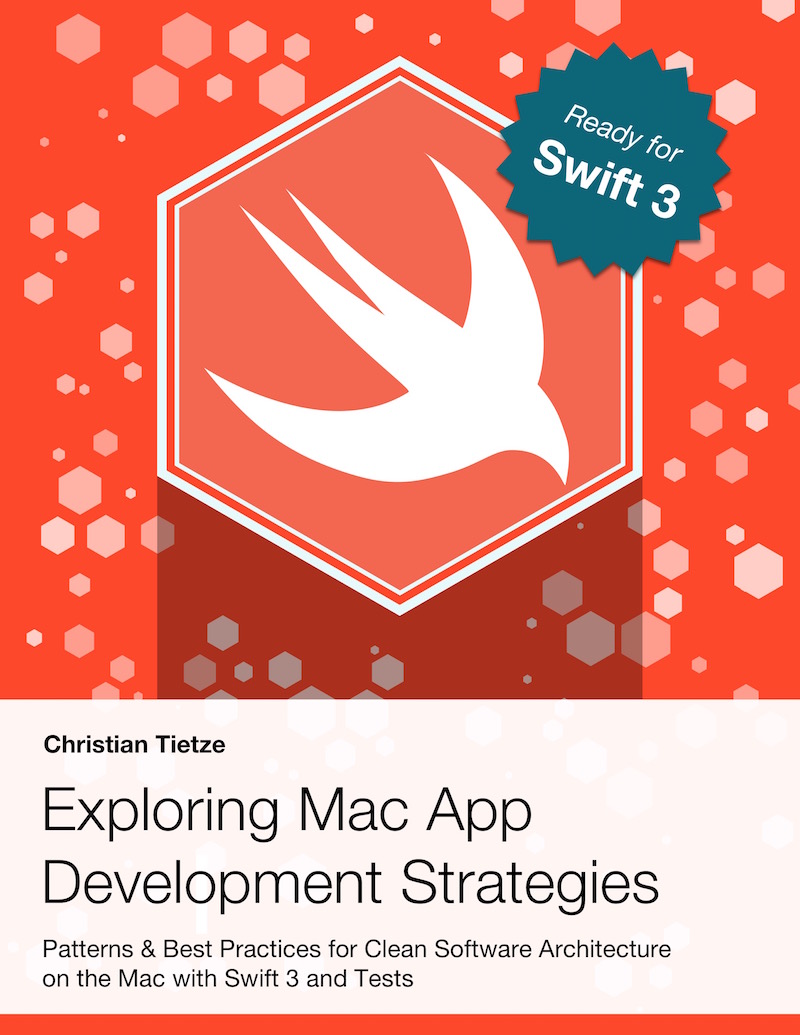Model–View–View Model (MVVM) Primer
This is an excerpt of my book “Exploring Mac App Development Strategies”, on a sale right now!
I learned that the “view model” in the architectural style of MVVM is a “model of the view” instead of a “model for the view”. Let me explain the difference and the benefits of being able to chose between both.
There’s your core domain model. Around it, you build an application with its user interface. The user interface is called view. So far, so similar to MVC.
Now an MVC controller will usually have access to the model data and the view, or the view will be bound to the model and update itself automatically on model changes. The latter is sometimes called smart view pattern. As we’ll see, I don’t like either of that. A basic Domain-Driven Design principle I adhere to is this: domain objects should not bleed into other layers of the application. At least not if they’re mutable, that is, if they’re Aggregates. You can argue that read-only entities would do no harm, but I yet have to come across something like this.
To get any data into the view, MVVM introduces the view model or presentation model. Application of this pattern vary, but they all have in common that the view model is a container for the data of the domain model. The domain model is thus shielded from the user interface. I came to think that the view model is “a model for the view”, but people repeatedly say it’s a “model of the view” instead. Depending on your interpretation, how you apply the pattern will vary of course.
- Dumb Data-Transfer Objects are “a model for the view”. The view takes the data, works with it, and displays it somehow.
- Presenters, however, model what the view can do. They become “a model of the view.” They take care of assembling data suited to the view’s needs.
In the Ruby on Rails world, the presenter has become a service object which holds on to the domain model and exposes its data in a way meaningful to the view. Say you’ve got a Person entity with firstName and lastName. A PersonPresenter will take care of assembling a fullName, to display a list of Persons, for example. You can go all nuts here: create a PersonListPresenter for displaying full names in a list, and a PersonFormPresenter for exposing both first and last name to edit them in a form, say. This way, the view can be as dumb as possible. That’s a case of preparing “a model for the view.” After all, you pass the presenter in, so it becomes the view’s model.
I learned to think about it from a different perspective.
Adhering to dependency inversion, the concrete presenter is indeed injected into the view. Its interface is specified by means of the view component arrangement, though. If the view displays the full name of a person, the presenter’s interface will codify this requirement as fullName() -> String. This way, the view is responsible for specifying its data provider’s capabilities while it depends on some other service to provide an actual implementation. The concrete presenter is created outside the view layer.
Your client code doesn’t need to know what the view does or which components it’s made of. It only needs to understand the presenter’s interface. The presenter in this case is a model of the view: it doesn’t care about the Domain Model. It only cares about the view’s specification.
A few weeks ago, I linked to a post by Srdan Rasic about MVVM in Swift. Adapted to the example here, it could look like this:
class PersonViewController {
var fullNameLabel: UILabel
var viewModel: PersonViewViewModel {
didSet {
viewModel.fullName.bindAndFire {
[unowned self] in
self.fullNameLabel.text = $0
}
}
}
// ...
}
Now when the view model’s fullName property changes, the user interface will update. As a corollary, change the properties on this model of the view to update the UI. A presenter hides away the complexity of the user interface. To the client code, the rest happens magically.
Essentially, that’s what Cocoa Bindings promise. Only they tend to be used on objects of the Domain Model. That’s not where they belong. Read my book about clean coding for the Mac to find out what to do instead!
